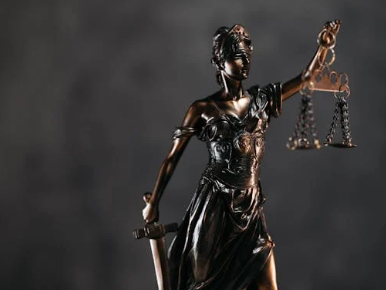Among the many grave items are headbands constituted of gold and embossed with pictures of bulls, gazelles, lions and flowers. The motifs are Minoan however the headbands had been in all probability made in Egypt.
A whole lot of historical artifacts, together with headbands of pure gold, have been unearthed from elite Bronze Age tombs on the Mediterranean island of Cyprus.
The finds present the nice wealth of the individuals buried there, which was based mostly on the island’s commerce in copper — a vital metallic at the moment that was used to make bronze.
The artifacts embrace many imported into Cyprus from different main cultures within the area, together with the Minoans on Crete, the Mycenaeans in Greece and the traditional Egyptians .
Archaeologist Peter Fischer , professor emeritus on the College of Gothenburg in Sweden, mentioned the imported objects confirmed the extent of Mediterranean commerce in the course of the Late Bronze Age, between about 1640 B.C. and 1050 B.C.
The elite tombs on Cyrus date from the Late Bronze Age — between 1640 and 1050 B.C. — and had been full of a whole lot of artifacts given as grave items. (Picture credit score: Peter Fischer)
“The quite a few finds of gold, more than likely imported from Egypt however exhibiting primarily Minoan motifs, reveal that the Egyptians acquired copper in alternate,” he advised Reside Science.
Associated: Gold ‘lotus flower’ pendant from Queen Nefertiti’s time found in Cyprus
The archaeologists additionally discovered on a regular basis objects, resembling fishbones from freshwater Nile perch. “They got here both with Egyptian ships or with returning Cypriot crews, demonstrating the extraordinary commerce between these cultures,” Fischer mentioned.
The grave items included a number of collectible figurines, resembling this certainly one of a bull — an essential picture in Minoan perception on the close by island of Crete. (Picture credit score: Peter Fischer)
Wealthy in copper
Fischer and his colleagues have been excavating a Bronze Age buying and selling emporium at Hala Sultan Tekke on the southern coast of Cyprus since 2010; they usually found the elite tombs earlier this 12 months.
The 2 tombs had been full of greater than 500 artifacts, together with pottery from Crete, Greece and Sardinia; ornaments product of amber from the Baltic; valuable stones like blue lapis lazuli from Afghanistan and purple carnelian from India; bronze mirrors; and daggers, knives and spearheads.
A number of objects had been constituted of ivory and a particular glazed ceramic referred to as faience, which had been introduced there from historical Egypt, in accordance with an announcement from the College of Gothenburg .
Archaeologists from Sweden’s College of Gothenburg have performed excavations on the south coast of Cyprus since 2010. (Picture credit score: Peter Fischer)
Among the many most outstanding artifacts are gold diadems, that are embossed with pictures of bulls, gazelles, lions and flowers.
Whereas they appear to be Minoan in model, the diadems had been in all probability crafted in Egypt in the course of the 18th dynasty, between about 1550 B.C. and 1295 B.C. — and maybe on the time of the Pharaoh Akhenaten and Nefertiti , in accordance with the assertion.
Fischer mentioned the wealth of the island’s elites was based mostly on their management of copper ore mines within the Troodos Mountains, within the west of Cyprus. Copper was alloyed with tin to make bronze, so it was in nice demand.
The tombs “rank among the many richest ever discovered within the Mediterranean area,” Fischer mentioned in an e-mail. “The dear tomb artefacts point out that their occupants dominated town, which was a centre for the copper commerce within the interval between 1500 and 1300 BCE.” At the moment, “Cyprus was a ‘crucible’ of cultures, more than likely dominating the commerce within the jap Mediterranean,” he mentioned.
The newest finds include two elite tombs full of a whole lot of grave items, together with ornaments, weapons, jewellery and pottery. (Picture credit score: Peter Fischer)
Household tombs
The researchers found the elite tombs simply outdoors the huge historical metropolis at Hala Sultan Tekke utilizing magnetometers, which measure the geomagnetic area to disclose the place earth underground has been disturbed previously.
Every tomb had a number of chambers related to the floor by a slim passage; they usually contained the stays of a number of individuals, together with these of a lady buried beside a 1-year-old youngster.
Most of the grave items had been imported into Cyprus from different Bronze Age cultures across the Mediterranean, together with this krater — a sort of jar — from Mycenaean Greece. The glaze on it depicts a horse-drawn chariot. (Picture credit score: Peter Fischer)
It is doable that the tombs had been royal, however little is thought of the type of authorities on Cyprus at the moment, Fischer mentioned. “The tombs are clearly household tombs… holding the household collectively within the afterlife.”
Fischer mentioned the researchers will use DNA evaluation in an effort to find out how the individuals buried within the tombs had been associated, whereas evaluation of the ratios of various isotopes (nuclear varieties) of strontium within the bones would possibly make clear their geographical origins.
“We’ve preliminary outcomes which verify the multiculturality of the inhabitants of Hala Sultan Tekke,” he mentioned.
